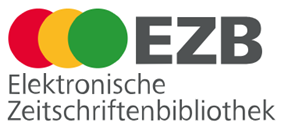Lack of Atherosclerotic Lesion Progression on Severe Hyperlipidemic Rabbits
Abstract
In human, coronary heart disease causes by severe pathological atherosclerosis. In this study, we established animal model to study atherosclerosis caused by hyperlipidemia. This study therefore was undertaken to define the effect of increasing atherosclerosis risk factor, include body weight as well as age, cholesterol concentration and dietary fat in rabbit chow, and time of treatment. Male New Zealand White rabbits were divided into 4 groups; Group I and III were consisted of 2 months rabbit were fed with standard rabbit chow. To introduce atherosclerosis, the chow for Group II was contained 0.25% cholesterol and 5% palm oil; whereas the chow for group IV was contained 0.5% cholesterol and 5% coconut oil to induce higher atherosclerotic lesion. Results showed that group II and IV developed hyperlipidemia. However, aortic cholesterol concentration in those groups did not different significantly (P > 0.05). We suggest that low carbohydrate composition in diet, 50% lower compared to the previous researches, was able to increase high-density lipoprotein (HDL) concentration. This study demonstrated the complex interactions between low carbohydrate diet and cholesterol metabolism and the dramatic effects of reducing atherosclerosis risk factor; however, even though hyperlipidemic condition was achieved, total plasma cholesterol HDL ratio was maintained low.Key words: atherosclerosis, hyperlipidemia, rabbit, low carbohydrate diet
Downloads
HAYATI J Biosci is an open access journal and the article's license is CC-BY-NC. This license lets others distribute, remix, tweak, and build upon author's work, as long as they credit the original creation. Authors retain copyright and grant the journal/publisher non exclusive publishing rights with the work simultaneously licensed under a https://creativecommons.org/


















.png) IPB University
IPB University Department of Biology
Department of Biology The Indonesian Biological Society
The Indonesian Biological Society 

